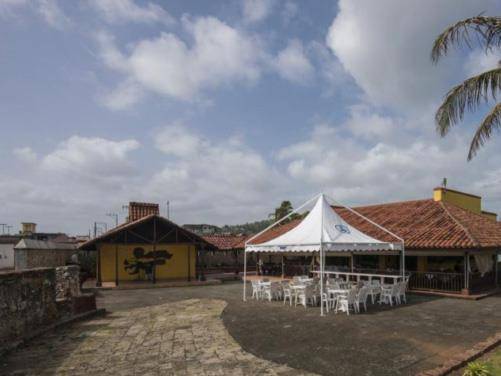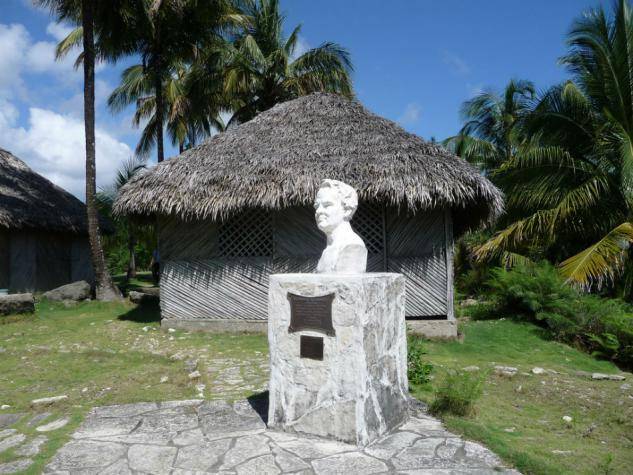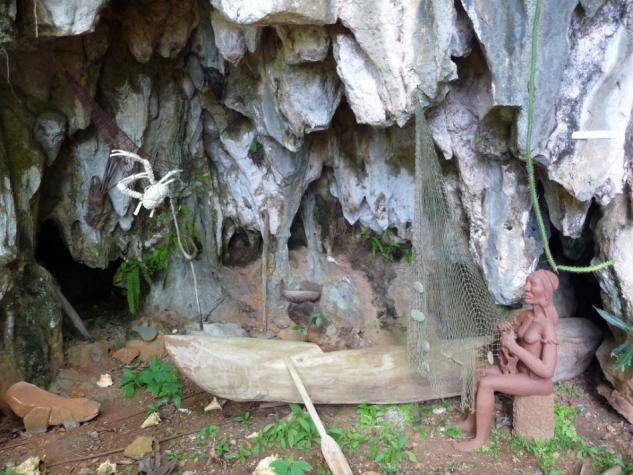
Fuerte de la Punta
Baracoa's third fortress, Fuerte de la Punta, was built in 1803 on a spit of land over the entrance to the bay. During the pseudorepublic it housed a radio telegraph office. The fortress now contains the Restaurante La Punta.
New account? Signup
The hotel is located in a privileged position in the historic center of Baracoa Town. Offers accommodation and restaurant services.
Rooms: 10
Restaurants and bars: 1 Restaurant and 1 Snack-Bar.

Baracoa's third fortress, Fuerte de la Punta, was built in 1803 on a spit of land over the entrance to the bay. During the pseudorepublic it housed a radio telegraph office. The fortress now contains the Restaurante La Punta.

The Alejandro de Humboldt National Park is of the most important places for the preservation of the endemic flora of the region. The name of the park is an homage of the German Alejandro de Humboldt, an important scientist who went all over the island in the 19th century, achieving the title of Cuba’s Second Discoverer. It covers the provinces of Guantánamo and Holguín, in the northeastern region of the country with an extension of 10,680 hectares. This Park was declared World Heritage in 2001 and is one of the mountainous richest endemic ecosystems in the world. The landscapes of the area are typical and at the same time unique in the country, showing contrasts between the mountains of Sagua-Baracoa, with the vegetation of tropical humid forests. The park has camping places, accommodations, guided routes and high qualified staff to solve any doubt or problem of the visitors. 64 species of birds have been reported in its fauna, out of which 12 are endemic, which makes this area very appropriate for their observation. The region represents the last habitat of the Royal Woodpecker, and among mammals, one of the last ones for Almiques. Here we can also find one of the most beautiful species of snails in the world: The Polymita. Enjoy the forest, rivers, puddles and waterfalls in a rainy environment which create an incomparable landscape. A real treasure you cannot miss on your trip to the Eastern side of Cuba.

The place is characterized by a lighthouse, known as La Concha, which dates from 1861 and from where, going up to its 144 steps, you can admire some impressive views. Its construction was authorized by the Queen of Spain and began the construction of the lighthouse at Punta de Maisi in 1857, under the leadership of the Commander Engineer, Don Mariano Moreno. In the area you can enjoy the magnificent Maisí Terraces. Of the 24 emerged ones, some reach the height of 460 meters above the sea level; while in the underground levels can reach a depth of 180 meters. On cloudless days you will have the chance of sighting Haiti, located 70 kilometer far from Punta de Maisí Top. You can also relax in the best white sand beach that you will find below the lighthouse.

Around Baracoa are several dozen pre-Columbian archaeological sites related to the two major indigenous groups that once inhabited the region. It is a marvellous facility for lovers of history and archaeology, situated in a colonial ambiance on the second terrace of Seboruco, known as Paradise Heights. The area in which it is located is rich in remains of our first population. The Paradise Cave Archaeological Museum contains a copy of the Taíno tobacco idol found nearby in 1903 (the original is in Havana).
Skedio, S.L. CIF: B62163670. # Travel Agency Licence: GC-3667 © 2025 Skedio Travel Group, All rights reserved